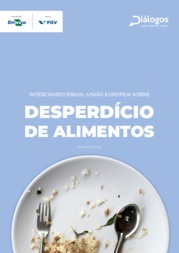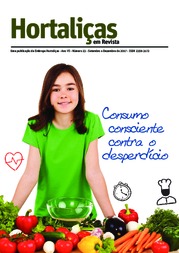UN's Food Waste Index estimates yearly food waste at 121 kilograms per capita
UN's Food Waste Index estimates yearly food waste at 121 kilograms per capita
New study with data gathered from 54 countries, including Brazil, counted on the collaboration of Embrapa Food and Territories
It is estimated that 931 million tonnes of food, or 17% of total food available for consumers in 2019, were dumped by homes, retails, restaurants, and other food services according to the global study Food Waste Index, released this March by the United Nations Environment Programme (UNEP) and the British organization WRAP (The Waste and Resources Action Programme).
The weight of global food waste is equivalent to about 23 million fully-loaded 40-ton trucks , which would be enough to go around the Earth seven times if they were lined up.
The study, which focuses on food retail and consumption stages, is part of a global effort to contribute with solutions to target 12.3 of the Sustainable Development Goals (SDGs) that aims to reduce food loss and waste in half by 2030.
The new UN report complements the Food Losses Index, prepared by the Food and Agriculture Organization of the United Nations (FAO/UN) including contributions from Embrapa researchers.
For Gustavo Porpino, specialist on the theme from Embrapa Food and Territories (Maceió-AL), who collaborated as reviewer of the UN study, the research results contradict the previous narrative that waste in the retail and consumption stages was mostly concentrated in developed countries. "The research points out that actions to reduce the problem are relevant both in developed and developing countries. In lower or medium income countries the estimated waste of families was even higher than higher income countries. It happens because the low/middle class have more difficulty to plan shopping, they often do not have the means to conserve food well, and some part of it still does not reuse leftovers. Education and communication for behavior change are important to revert this picture," he evaluates.
Porpino also highlights the importance of strengthening public policies aimed to reinforce circular food systems. "It is a global trend to further combine the circular economy with the agrifood sector. Brazil has a lot of potential to advance in the development of upcycled agrifood products, for example, which innovate by giving new uses to waste, and also co-create solutions with foodtechs in order to reduce food waste."
The study also points out that most waste happens in households, which dispose of 11% of the total amount of food available in the consumption stage of the supply chain. Food services and retail establishments waste 5% and 2%, respectively.
On a global per capita level, 121 kilograms of food are wasted yearly on average, considering the volume discarded by retailers and consumers, out of which 74 kilograms come from households. The report also includes per capita regional and national estimates.
Climate change
"Reducing food waste would decrease greenhouse gas emissions, mitigate the destruction of nature through land conversion and pollution, increase food availability, and would thus reduce hunger and save resources at a time of global recession," states Inger Andersen, Executive Director of the UN Environment Programme (UNEP).
"If we want to get serious about tackling climate change, nature and biodiversity loss, and pollution and waste, businesses, governments and citizens around the world have to do their part to reduce food waste. The UN Food Systems Summit this year will provide an opportunity to launch bold new actions to tackle food waste globally," she adds.
According to UNEP, with 690 million people affected by hunger in 2019 - a number that might go up significantly with the COVID-19 global pandemic - and three billion people unable to afford a healthy diet, consumers need help reducing food waste at home.
Global problem
"For a long time it has been presumed that household food waste was a significant problem only in developed countries," says Marcus Gover, CEO of WRAP. "With only 9 years ahead, we will not reach Target 3 from SDG 12 if we do not significantly increase investment in fighting food waste in households globally. This must be a priority for governments, international organizations, businesses, and philanthropic institutions," he adds.
An increasing number of countries have measured food waste lately. The report declares that 14 countries already have data on household food waste collected in a compatible manner to the Food Waste Index.
Other 38 countries have data on household food waste where few modifications on the methodology, geographic coverage, or sample size would allow them to create an estimate compatible with SDG 12.3. In total, 54 countries have data relating to at least one of the three sectors analyzed by the report.
The new estimates on global food waste were prepared from existing data points and extrapolations based on estimates observed in other countries. The study by Embrapa and FGV on food waste by Brazilian families, prepared through the UN-Brazil Sector Dialogues project, was used to estimate the amount wasted in the consumer stage in Brazil.
The data on the proportion of edible and inedible parts wasted is only available in some high-income countries and show a 50/50 proportion in households, on average. The proportion of inedible parts is an important knowledge gap, which may be higher in lower-income countries.
Read the full report here.
Dalmo Oliveira, with contributions from UNEP's press service (0895 MTE-PB)
Embrapa Food and Territories
Press inquiries
imprensa.alimentos.territorios@embrapa.br
Phone number: +55 83 98897.1340
Luís Filipe Escobar, supervised by Mariana Medeiros (Translation - English)
General Secretariat
Further information on the topic
Citizen Attention Service (SAC)
www.embrapa.br/contact-us/sac/



